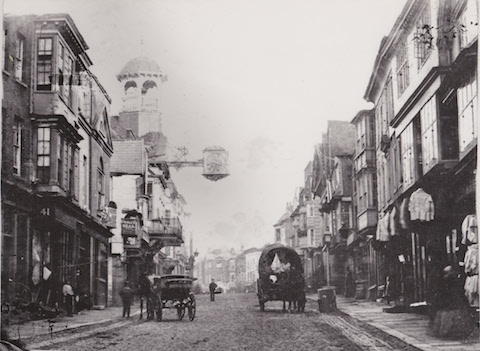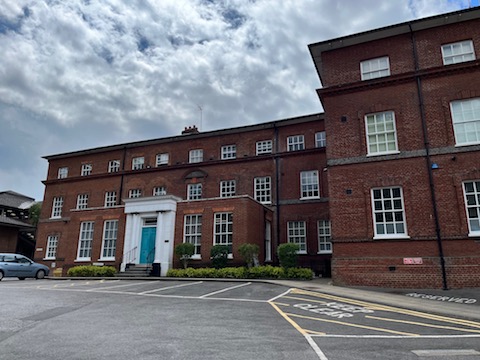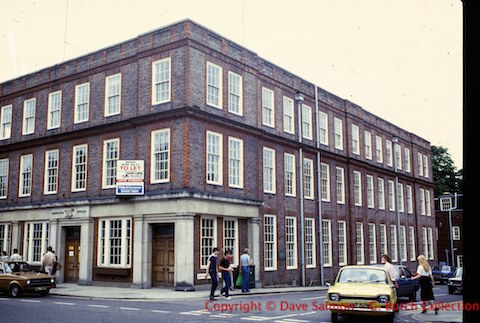 Abraham Lincoln
If given the truth, the people can be depended upon to meet any national crisis...
Abraham Lincoln
If given the truth, the people can be depended upon to meet any national crisis...
 Guildford news...
for Guildford people, brought to you by Guildford reporters - Guildford's own news service
Guildford news...
for Guildford people, brought to you by Guildford reporters - Guildford's own news service
A Brief Look at Changes in Guildford’s Local Government History
Published on: 15 Jun, 2024
Updated on: 15 Jun, 2024
By Aidan Todd
Guildford is an interesting case study on how local government has changed over time.
In the 1888 and 1894 Local Government Acts Guildford was made a municipal borough with a standardised system of all ratepayers (burghers) having the right to vote. This was implemented nationwide until the Representation of the People Act of 1928. This consisted of four local authority types – county boroughs, municipal boroughs, urban districts, and rural districts.

Guildford High Street and the Guildhall in about the 1880s.
Unlike the county boroughs, which had complete autonomy over their own affairs similar to a city council today, the municipal boroughs were akin to borough councils today, although they enjoyed more autonomy. It’s worth repeating here, Guildford, contrary to what many believe, is not a city just because it has a cathedral.
Surrey, therefore, once had a vast patchwork of different local authorities, the situation particularly interesting in rural areas.
Guildford, Godalming, and Reigate were municipal boroughs, although Woking was an urban district, then being a smaller town.

Millmead House is today part of Guildford Borough Council’s premises at Millmead. The building was bought by Guildford Rural District Council in 1926 to be its offices. It made additions to the original mansion that was built in the mid-18th century.
Indeed, along with Guildford’s borough council (that was mostly referred to as the ‘town’ council), the immediate surrounding area was administered by Guildford Rural District Council.
Surrey is a particularly good example of these, in general, smaller local authorities around more urban areas.
It was remarked that the rural district councils were predominantly doughnut shaped, and they had a mixture of functions. In some respects rural district councils had some similarities to today’s parish councils.
The Borough of Guildford was formed in 1974 under the Local Government Act 1972, bringing together the former Guildford Borough and Guildford Rural District Councils.
An advantage of the 1972 Act was that it created more uniform structures within the two-tier system, which caused less confusion in administration.

The minicipal buildings on Guildford’s upper High Street, originally being the offices of the pre-1974 Guildford Borough Council. This photo dates to 1982 by which time it had been vacated and staff had moved to Millmead. Picture copyright: Dave Salmon, Geoff Burch Collection.
However, the Act resulted in fundamental changes in local government, in a way that was often deeply jarring and demoralising for people who had grown up identifying with a certain county and local government system.
There were many instances where local campaigns were created to reverse changes that they felt were incompatible with their heritage.
In recent years there has been a move towards unitary authorities, with the argument that it allows more streamlined decision making and the interests of a whole county to be taken into consideration. Dorset and Cornwall became unitary authorities in the late 2000s. In 2020 Surrey was discussing this, which I previously wrote an article for the Dragon advising against it.
 However, a disadvantage is that it means that local government becomes more distant from the people, and counties are further partitioned away from their historic boundaries.
However, a disadvantage is that it means that local government becomes more distant from the people, and counties are further partitioned away from their historic boundaries.
Britain already has some of the largest local government sizes anywhere in Europe. While anti-NIMBYs will no doubt be pleased by these developments – as people are always more supportive of development when it’s not near them, hence giving local communities power over development has the danger of hurting the general welfare – there is also something to be said about the delegation of power to the smallest possible level, when you can know your councillors, and those that govern you, on a day-to-day basis.
Surrey is lucky in that it keeps a good deal of its historic borders, despite swathes to the north-east the county that were absorbed into Greater London as long ago as 1889, with further losses in 1965 with with the creation of the London boroughs of Kingston, Merton, Richmond, Sutton and an expanded Croydon.
In my opinion, local government is an important aspect of how we define our local identity, with historic counties going back to the Norman conquest. It is important that administrative divisions accurately reflect the history of an area and how local people identify themselves.

Click on cartoon for Dragon story: Public Asked for Views on SCC’s Proposal for Reduced Speed Limits


Recent Articles
- Letter: Reflecting on the Juneja Case Shows the Importance of the Monitoring Officer Role
- New Electric Trains Now Arriving at Guildford – 100 Years After the First One Did
- Woman Pedestrian Dies on A31 After Collision With a Truck
- Road Closed After Lorry Hits Railway Bridge
- A281 Closure – Latest Report Says The Street Will Be Re-opened Tomorrow
- The Bishop’s Leap of Faith – From the Top of the Cathedral
- Residents Urged to Have Their Say on the Changing Shape of Surrey’s Local Government
- Driver Given a Suspended Sentence After Head-on Collision With Motorcycle
- Birdwatcher’s Diary No.329
- Opinion: We Must Plan To Deal with Guildford Gridlock


Search in Site
Media Gallery
Dragon Interview: Local Artist Leaves Her Mark At One of England’s Most Historic Buildings
January 21, 2023 / No Comment / Read MoreDragon Interview: Lib Dem Planning Chair: ‘Current Policy Doesn’t Work for Local People’
January 19, 2023 / No Comment / Read MoreA3 Tunnel in Guildford ‘Necessary’ for New Homes, Says Guildford’s MP
January 10, 2023 / No Comment / Read More‘Madness’ for London Road Scheme to Go Ahead Against ‘Huge Opposition’, Says SCC Leader
January 6, 2023 / No Comment / Read MoreCouncillor’s Son Starts Campaign for More Consultation on North Street Plan
December 30, 2022 / No Comment / Read MoreCounty Council Climbs Down Over London Road Works – Further ‘Engagement’ Period Announced
December 14, 2022 / No Comment / Read MoreDragon Interview: GBC Reaction to the Government’s Expected Decision to Relax Housing Targets
December 7, 2022 / No Comment / Read MoreHow Can Our Town Centre Businesses Recover? Watch the Shop Front Debate
May 18, 2020 / No Comment / Read More






Recent Comments